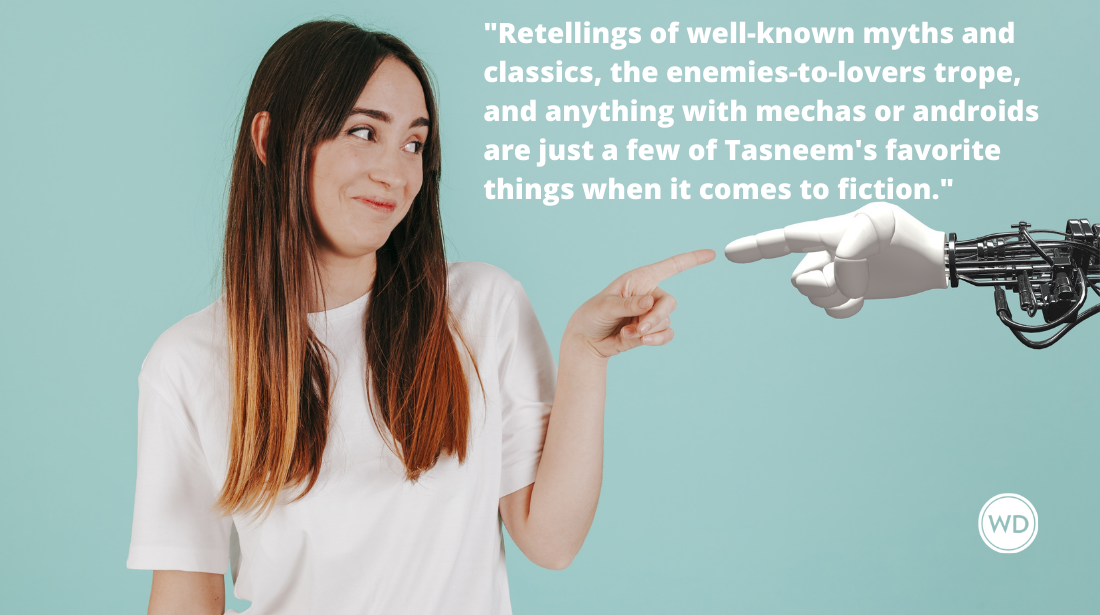How to Bring Subjects to Life in Your Nonfiction Writing
Amy Wilentz, author of THE RAINY SEASON and several other books, shares tips on making your subjects/characters come to life in nonfiction articles and books.
When you write nonfiction characters, you have to be vigilant and observant (this leads to good fiction writing, as well). People consist, for other people, of four things:
- what they look like
- where they are
- what they say
- and what they do.
Ask any actor. It’s all about: costume; setting; dialogue, and movement or action. It’s also about “business,” as actors call it. Business is the daily buzz and thrum of a person’s activity, the little things a character does: picks up a bottle, drums a finger, turns on a light, fiddles with the phone, slides her shoe on and off. Each detail adds to the reality of the portrait you’re drawing, and at the same time provides hints about the inner being of a man or woman or child. Of course every person has an inner life that is vibrant and active and changeable – but a writer of nonfiction can only guess at that. I can’t tell you what exactly the President of Haiti was thinking when I was interviewing him.
Order a copy of Amy Wilentz's Farewell, Fred Voodoo: A Letter from Haiti.
So you take an actor’s tools into your writing. Once you’ve guessed that a street kid you know in Port-au-Prince, say, is after your spare change above all things, then you’ll want to convey to your readers what aspects of the kid made you think that, so that your reader will see and hear and watch the boy, too, and have those same reactions and understanding.
It’s almost like conducting a scientific experiment or a magic show. Can I, by showing this boy behaving, make my readers see him as I did and understand him as I do? It’s a movie. Light on the screen, shadows on a wall, your marks on the page – and then a full human being emerges.
So I might show the kid in his rags and new sneakers, and take the reader into the empty jitney where he sleeps at night with some other boys. I’d show the boys bantering, teasing, smoking a shared cigarette in the darkness.
Then it would be daytime again, and the kid would be riding along in my passenger seat. I’d have the reader watch his eyes, as he laughs and jokes and does a running commentary about what’s on the radio, but still maintains a considering surveillance over me and my reactions to him. Then I’d probably write out some of our conversation. Him asking me about the little present I had just given him; how much did it cost, he wants to know, as he looks at it: a little keepsake made of shells. Five dollars. Five dollars? He says the number as if it were a billion. That’s money he could have had and spent on important things, if I had just given it to him.
Finally I’d show him tapping his foot impatiently, maybe, or playing with the car’s air-conditioning, or walking away from the car without shutting his door or saying good-bye, leaving the gift on the seat – whatever he did at that moment that showed me the fullness of his impatience and irritation, his lack of interest in the poor little gift.
The most important thing in writing character is this kind of honesty and then transparency. You try to show what you saw – but always with the lens open on the complete experience of the person, with all his subtleties and nuance.
The problem and fun of it is that while being honest, the meaning of your portrait must also be transparent to the reader. So you have to sharpen and shape your observation, much as a painter will do. You have to make choices about detail and angle from among the wash of information that another person in his full humanity pours over you. You strive for clarity and brilliance, position and attitude.
Even a photorealist painter is always making decisions about framing and point of view, about light and color, about reflection and detail. Even Hemingway, who seems to point and shoot, is always saying fine and good and true and right. Pointing and shooting is a term of photography, but also, it must be recalled, a term of hunting. In writing about characters, you want two things: you want your subject to live on the page, and you want to capture him.
I think that in order to do this, in nonfiction especially, you have to love the person you’re writing about, at least a little, and possibly a lot. Even for people I’ve written about closely and seriously whom I don’t like much, I feel a certain kind of warmth and intimacy. It’s a little depraved, really – what I feel for the people in my books. As if I’ve personally been inside their minds.
This is the way an actor feels about a character she’s played, whether beloved or reviled. You’ve been there, and from a deep and detailed experience of the exterior of your character, you’ve come to know the interior. You feel it. You’ve stolen your characters’ souls, a little of them. In some way you’ve possessed these people and they have possessed you back – you are known to each other.
Writer and subject are like lovers (not usually happy lovers, because the power in the couple resides largely in the hands of the writer). But that weird intimacy is the reason why the reaction to a profile by its subject can be so heated: it’s all too vulnerable, and then at the same time, they have been exposed. When you’ve observed closely and written well about a person, you can feel them looking out at you from the portrait you’ve drawn, and you and your readers are looking back in. In that frank exchange of naked regard lies the transparency the writer seeks.
Amy Wilentz is the author of FAREWELL FRED VOODOO: A LETTER FROM HAITI (Simon & Schuster, Jan. 2013), a book chronicling the history of Haiti from its origins through the earthquake to today. The New York Times Book Review called it "Excellent," while The Orchid Thief author Susan Orlean called it “engrossing and gorgeous and funny -- a meticulously reported story of love for a maddening place. Wilentz’s writing is so lyrical it’s like hearing a song – in this case, the magical, confounding, sad song of Haiti.”Amy Wilentz is the author of several other books, including The Rainy Season: Haiti Since Duvalier and I Feel Earthquakes More Often Than They Happen: Coming to California in the Age of Schwarzenegger. She has won the Whiting Writers Award, the PEN Martha Albrand Nonfiction Award, and the American Academy of Arts and Letters Rosenthal Award. She lives in Los Angeles. Find Amy on Facebook or follow her on Twitter.







